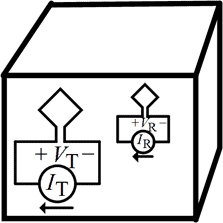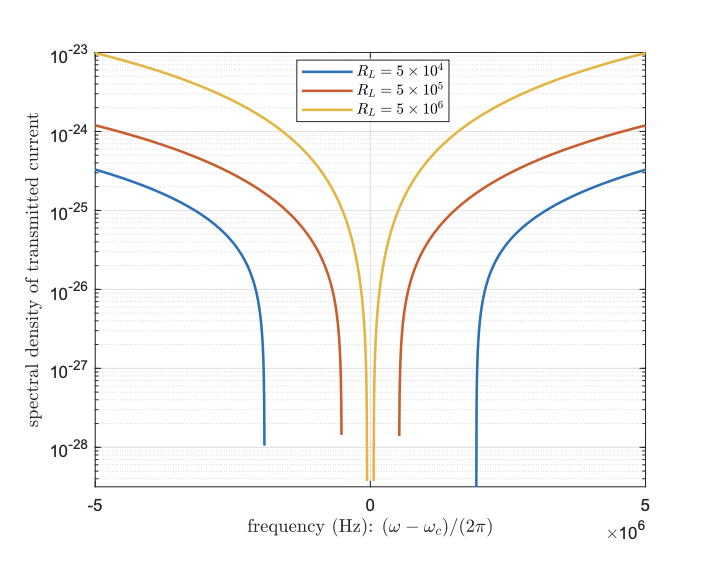Wireless Communications in Resonant Chambers

Research Overview
Engineers work very hard to create a system that performs well in a given propagation environment. Why not, instead, simply create the most favorable possible propagation environment? A resonant chamber! A copper box having complete isolation from the exterior and an automatically “rich scattering” environment. Potential applications: data centers in which thousands of servers are linked together wirelessly; factories manned by robots requiring no communication cables, and possibly no power cables.
We have obtained the Shannon capacity for a two-antenna link in a lossless resonant chamber (RC). The transmit antenna is driven by a current source, and the receive antenna is connected to a load resistor whose voltage is measured by an infinite-impedance amplifier. There are a countably infinite number of poles in the channel, associated with resonance in the RC, which migrate towards the real frequency axis as the load resistance increases. There are two sources of receiver noise: the Johnson noise of the load resistor, and the internal amplifier noise. An application of Shannon theory yields the optimum allocation of power versus frequency, and the capacity of the link, subject to bandwidth and power constraints. For a constant transmit power, capacity increases without bound as the load resistance increases. Surprisingly, the capacity-attaining allocation of transmit power versus frequency avoids placing power close to the resonant frequencies.
Future research includes 1) statistical modeling of propagation in the RC; 2) a new modulation scheme to replace OFDM (impractical because of long delay-spread); 3) MIMO; 4) if we use an RC for a factory, how close could the factory approach the ideal lossless RC?
follow this research
*stay current with research in this area by completing this form

 2025 Brooklyn 6G Summit — November 5-7
2025 Brooklyn 6G Summit — November 5-7 Sundeep Rangan & Team Receive NTIA Award
Sundeep Rangan & Team Receive NTIA Award 2025 Open House
2025 Open House









